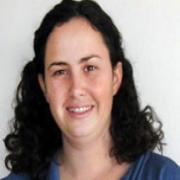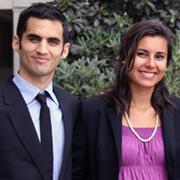TAU Archaeologists Develop New Method for Document Analysis
Tel Aviv University's Laboratory for Comparative Microarcheology has found a new way to minimize the damage to ancient documents
Our knowledge of ancient civilizations is limited by the small numbers of records and documents that have survived through the ages and been perserved and by our difficulty in deciphering ancient languages. For years the scientific community has attempted to develop new methods of gaining information about the origins of documents and the path they might have traveled across the world, by analyzing the materials used to manufacture them. This additional information is crucial for historians and archaeologists and allows scientists to gain new insights about ancient cultures.
In tune with this global effort, ten years ago Tel Aviv University's The Laboratory for Comparative Microarchaeology and Metal Conservation began operating under the guidance of Dr. Yuval Goren. It developed a new approach to determining the origins and age of ancient documents and tablets, borrowing methodology from the Natural and Exact Sciences.
Preserving Ancient Documents
Among the projects being worked on at the Laboratory for Comparative Microarchaeology are records found in Ugarit, a port city thousands of years old, located on the eastern Mediterranean. Ten years ago the study of such artifacts would have required collecting samples and analyzing the chemicals found in the ink as well as the "stationary" used by ancient scribes. But today, thanks to Dr. Yuval Goren and TAU's VP of Research and Development, Tel Aviv University possesses a brand new, mobile, X-Ray Fluorescence device, which can detect up to 34 chemical elements without damaging the document.
For the past two years the Laboratory for Comparative Microarchaeology has developed a method of using the device to study ancient Mesopotamian documents by analyzing their chemical makeup.
The compact size of the XRF device allows for easy transportation to museums and digging sites, where documents can be instantly dated. Over the last year this method has been used at the National Museums in Berlin and The British Museum to study documents dating back from the Hittite Empire (prominent during the late Bronze Age) and from Egypt's New Kingdom (16th-11th century BCE). The research was conducted jointly by Dr. Yuval Goren and Prof. Jörg Klinger of Freie Universität Berlin.






